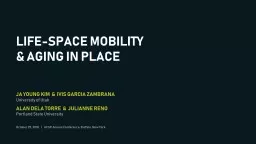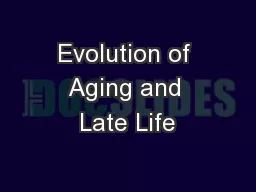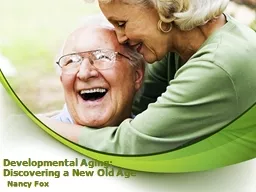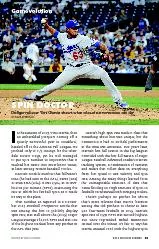PPT-LIFE-SPACE MOBILITY & AGING IN PLACE JA YOUNG KIM & IVIS GARCIA ZAMBRANA
Author : myesha-ticknor | Published Date : 2019-11-02
LIFESPACE MOBILITY amp AGING IN PLACE JA YOUNG KIM amp IVIS GARCIA ZAMBRANA University of Utah ALAN DELA TORRE amp JULIANNE RENO Portland State University October
Presentation Embed Code
Download Presentation
Download Presentation The PPT/PDF document "LIFE-SPACE MOBILITY & AGING IN PLACE..." is the property of its rightful owner. Permission is granted to download and print the materials on this website for personal, non-commercial use only, and to display it on your personal computer provided you do not modify the materials and that you retain all copyright notices contained in the materials. By downloading content from our website, you accept the terms of this agreement.
LIFE-SPACE MOBILITY & AGING IN PLACE JA YOUNG KIM & IVIS GARCIA ZAMBRANA: Transcript
Download Rules Of Document
"LIFE-SPACE MOBILITY & AGING IN PLACE JA YOUNG KIM & IVIS GARCIA ZAMBRANA"The content belongs to its owner. You may download and print it for personal use, without modification, and keep all copyright notices. By downloading, you agree to these terms.
Related Documents














